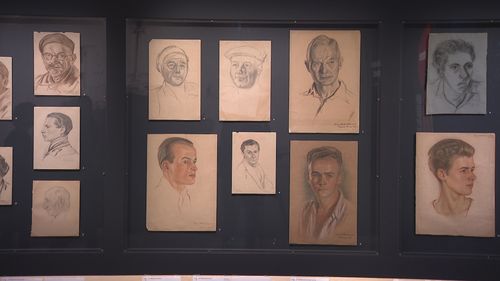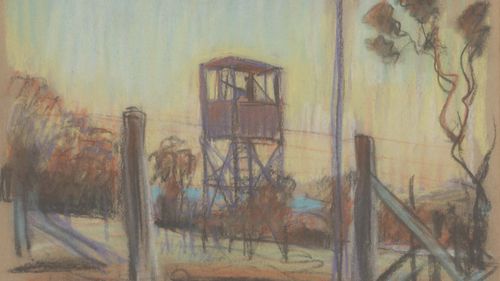They would escape from the tightening grip of Nazism in Europe in the opening salvos of WWII, hoping to secure sanctuary in Britain.
But sadly for 2546 men and boys, they would soon find themselves halfway around the world, on the edge of the Hay Plains, in western New South Wales.
They would become known as the Dunera Boys.

“The Dunera Boys were mostly Germans and Austrians who had left Europe during the rise of Nazisim,” says Louise Anemaat, lead curator of “Dunera; Stories of Internment”, about to open in Sydney.
Belinda Castles’ grandfather Heinz would be one.
“His father was murdered, he was a trade union leader, and he escaped to Belgium, where he met my grandmother, and they would then flee to the UK”.
But as Britain stood alone against a Europe now in the thrall of Nazi Germany, the UK would declare them enemy nationals, ordering their transportation to Australia.

And after enduring a horrific transit aboard the ship, they would soon find themselves on the treeless vista of the Hay Plains.
But quickly, the Dunera boys would occupy themselves in a way that still lasts today.
“There was a great cross-section of people in the camps, tradesmen to artists, and everyone contributed,” says Louise.
It was a place of quite a lot of creativity and activity.”
They would produce a gallery of portraiture, crafted to the highest artistic standard, even drafting their own camp currency, deliciously hiding messages beneath the barbed wire border, printed on the press of the local paper.

“They were quite taken aback and surprised, how well treated they were, once they arrived,” adds Louise.
Their internment would last less than a year, most offering their support to the local war effort, but the horrible irony of escaping injustice to be imprisoned half a world away would leave a permanent mark on many.
And while the huts in which they lived are long gone, the beauty of the work they used to occupy their time remains, and is on show at the State Library of NSW.







